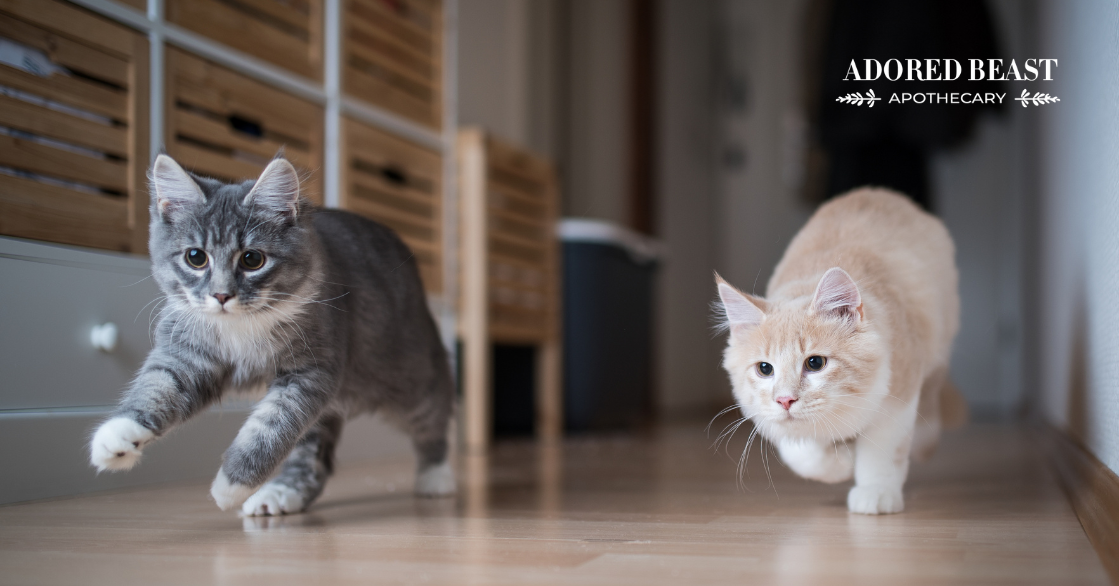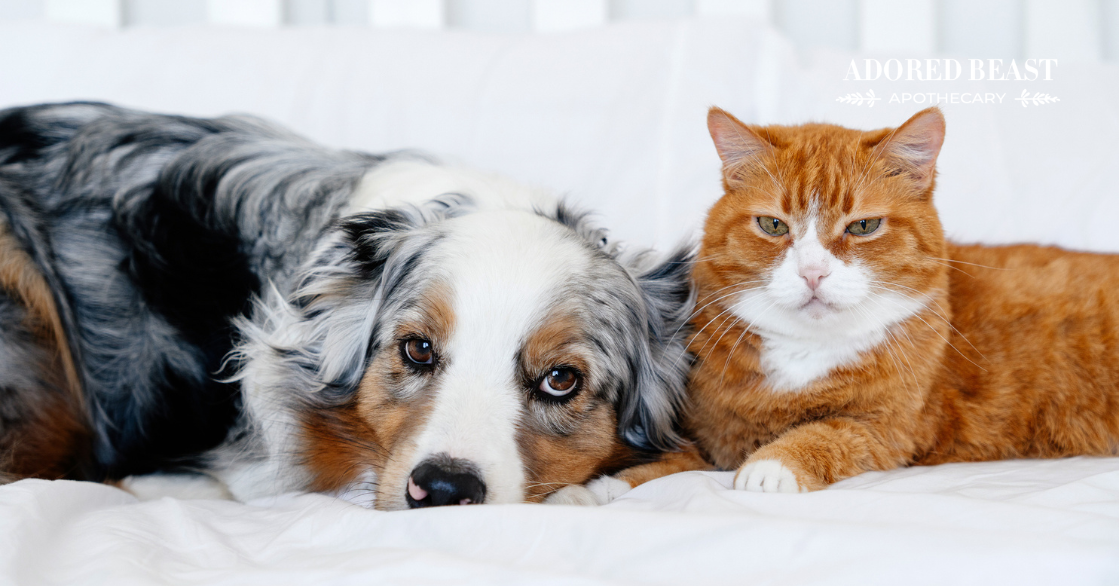We’ve all seen the videos of the rolly-polly kitties, lounging about, looking rotund and seemingly happy as a clam. Many consider them humorous or cute, but behind those viral videos lies a problem…
Just like in people, maintaining a healthy weight in cats is essential for overall wellness and longevity. Extra pounds can increase the risk of diabetes, arthritis, liver disease, and heart problems – and can reduce your cat’s quality of life. But helping a cat lose weight safely takes more than just cutting calories. It requires a holistic approach that includes diet, exercise, and mental well-being.
Here’s how to help a cat lose weight the safe and sustainable way.
How to Help a Cat Lose Weight Safely
3 quick tips will make a huge difference!
1. Start with a Smarter Diet (Not Just a Smaller One)
It’s tempting to simply feed less food, but cutting calories without addressing what your cat is eating can do more harm than good. Many commercial cat foods – especially dry kibble – are high in carbs and low in moisture, which doesn’t align with your cat’s natural needs.
Tips for a healthier diet:
- Choose high-protein, low-carb foods. Cats are obligate carnivores, so their bodies are designed to run on animal protein. Meat should make the the majority of their diet.
- Add moisture. Wet food or raw diets are often more appropriate for weight loss and overall health than dry kibble.
- Watch the treats. Treats should make up no more than 10% of your cat’s daily calories, and opt for healthy, high-protein options.
- Feed on a schedule. Free-feeding encourages overeating. Stick to set mealtimes to help manage hunger and portion control.
- Work with your vet. Rapid weight loss can lead to fatty liver disease (hepatic lipidosis) in cats. Your vet can help you create a gradual and safe weight-loss plan.
Quick Tip: The chronic long-term dehydration that comes from eating a dry diet puts your cat at risk for the development of chronic kidney disease, which is all too common among aging cats. Cats who eat moisture-depleted diets are also at a much higher risk for urinary tract and bladder issues, because dry diets just don’t contain the level of moisture required to keep the urinary system healthy.
2. Get That Cat Moving
Food is not the only thing to think about when it comes to how to help a cat lose weight. Exercise is key to weight loss, but it can be a challenge with a creature known for napping 18 hours a day! The trick is making movement fun and natural for your cat.
For indoor cats:
- Use interactive toys. Wand toys, laser pointers, or battery-powered mice can encourage short bursts of running and pouncing.
- Create climbing opportunities. Cat trees, shelves, or window perches stimulate movement and help build muscle.
- Make them work for food. Puzzle feeders or treat-dispensing toys slow down eating and add activity to mealtime.
- Schedule playtime. Just 10–15 minutes of active play, twice a day, can make a big difference.
For outdoor cats:
- Supervised outdoor time. Leash training or a secure catio (cat patio) can encourage more exploration and movement.
- Safe enrichment. Place bird feeders outside windows to encourage natural hunting behaviours, or hide food or toys in the yard.
- Go for a walk. Yes, seriously. A walk is a great way to engage the body and the mind and get in some exercise.
Quick Tip: The benefits go well beyond shedding those extra pounds. You can read more about the importance of exercise for your feline friend right here!
3. Don’t Forget Mental Stimulation
Stress and boredom are often overlooked contributors to weight gain in cats. Emotional eating isn’t just a human thing; cats can also overeat when they’re bored or anxious. Keeping their minds engaged can reduce this behaviour and support a healthier lifestyle.
Ways to keep your cat mentally engaged:
- Rotate toys regularly so your cat doesn’t get bored.
- Use scent enrichment like silvervine or catnip.
- Offer puzzle toys to make meals more rewarding.
- Provide safe hiding spots and vertical spaces to reduce stress, especially in multi-cat households.
- Create a predictable routine, which helps reduce anxiety and obsessive behaviours.
Quick Tip: Sometimes it’s hard to tell when a cat is bored – the signs can be very subtle. Want to know more? Read this post next!
A Gentle, Gradual Approach Works Best
Knowing how to help a cat lose weight isn’t about quick fixes. The safest weight loss happens slowly – about 1–2% of body weight per week. For a 15-pound cat, that’s only around 2–4 ounces a week. It may not seem like much, but it adds up and makes a huge difference over time.
Helping your cat reach a healthy weight is one of the most loving things you can do. By focusing on species-appropriate nutrition, encouraging daily play and movement, and supporting your cat’s mental well-being, you’re setting them up for a longer, happier life. Remember, every cat is different, so move at their pace. With patience and the right approach, your feline friend will be feeling lighter on their paws in no time.












